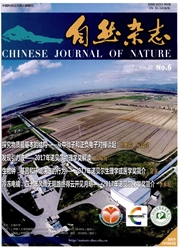

 中文摘要:
中文摘要:
Deciphering the eolian sources is critical to understand the paleo-significance of the Quaternary eolian deposits(the Xiashu loess)in the lower reaches of the Yangtze River.Both a local source from the fluvial sediments of the Yangtze River and a distal source from the northern deserts similar to that of the loess on the Chinese Loess Plateau(CLP)have been proposed.Recent researches show great advantages of detrital zircon ages as a source tracer for Asian dust based on the laser ablation U-Pb isotopic dating technique.This work presents the U-Pb ages of zircon grains extracted from the Xiashu loess.The results indicate that the Xiashu loess has a very different age distribution of zircon grains from that of the loess on the CLP as well as the materials in the arid lands of the Asian Interior.Instead,the zircon ages of the Xiashu loess are indistinguishable from the fluvial sediments of the Yangtze River,indicating the dominance of proximal dust source.Proximal source of the Xiashu loess implies that extensive eolian processes might have existed in the currently wet South China,possibly in response to the full glacial conditions after the middle Pleistocene transition of global climate.
 英文摘要:
英文摘要:
Deciphering the eolian sources is critical to understand the paleo-significance of the Quaternary eolian deposits (the Xiashu loess) in the lower reaches of the Yangtze River. Both a local source from the fluvial sediments of the Yangtze River and a distal source from the northern deserts similar to that of the loess on the Chinese Loess Plateau (CLP) have been proposed. Recent researches show great advantages of detrital zircon ages as a source tracer for Asian dust based on the laser ablation U-Pb isotopic dating technique. This work presents the U-Pb ages of zircon grains extracted from the Xiashu loess. The results indicate that the Xiashu loess has a very different age distribution of zircon grains from that of the loess on the CLP as well as the materials in the arid lands of the Asian Interior. Instead, the zircon ages of the Xiashu loess are indistinguishable from the fluvial sediments of the Yangtze River, indicating the dominance of proximal dust source. Proximal source of the Xiashu loess implies that extensive eolian processes might have existed in the currently wet South China, possibly in response to the full glacial conditions after the middle Pleistocene transition of global climate.
 同期刊论文项目
同期刊论文项目
 同项目期刊论文
同项目期刊论文
 期刊信息
期刊信息
